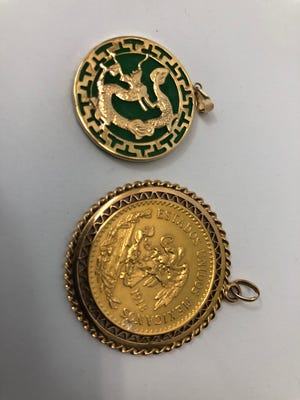
Let’s talk about gold. The real stuff. Golden sunsets and golden years are all well and good, but today, the topic is real gold.
Coins and jewelry made from gold are among our most asked-for items. As an elemental metal, gold is increasingly hard to mine and has some unique qualities unlike any other substance. In some countries — e.g., India — gold is given and received as token of luck and future good fortune. And while it’s not as rare nor as expensive as, say, rhodium, it’s hard to scoff at anything that costs almost $2,000 an ounce.
So, without spending any money, let’s take a look at what makes this stuff so appealing.
add a comment











